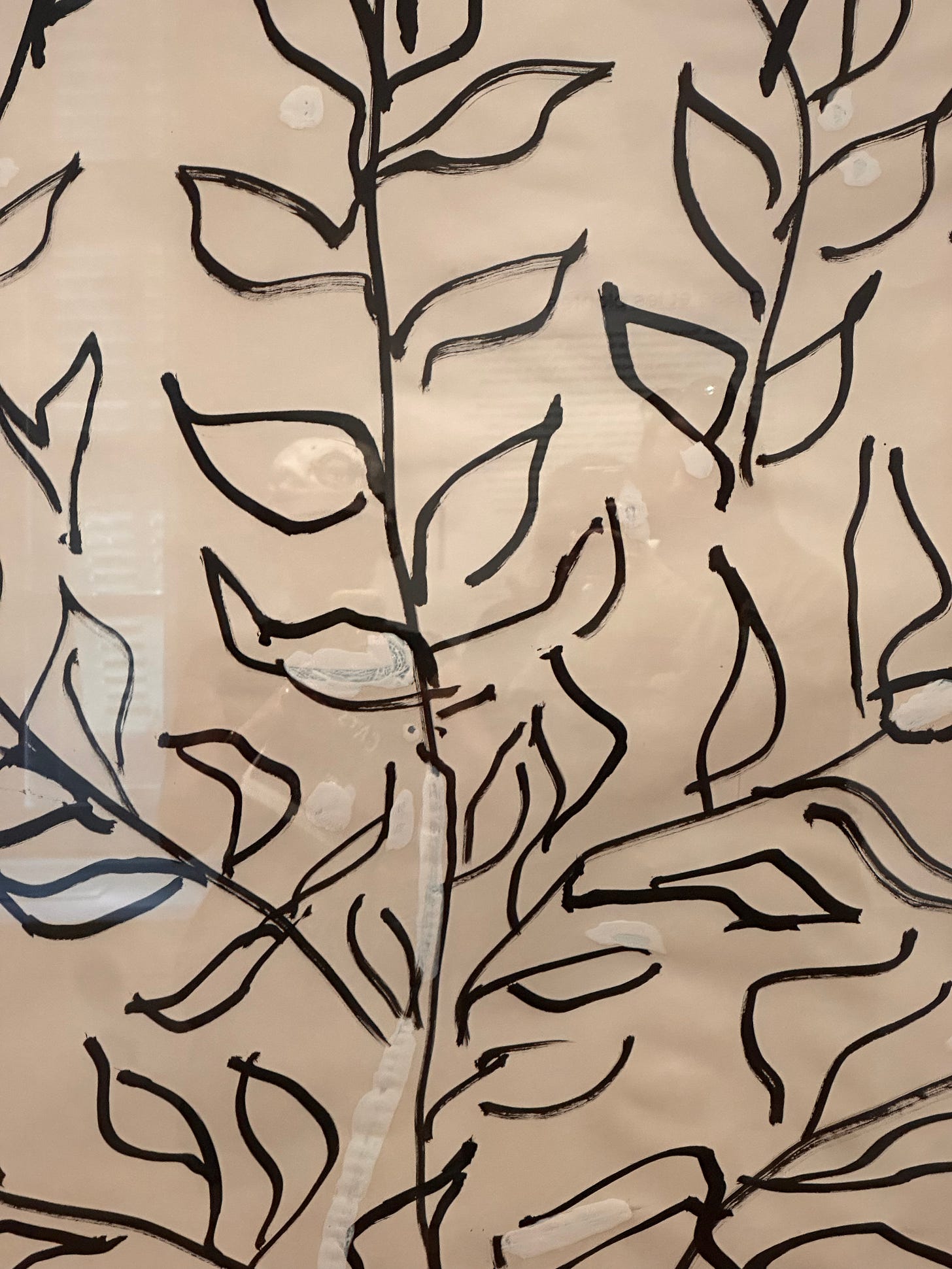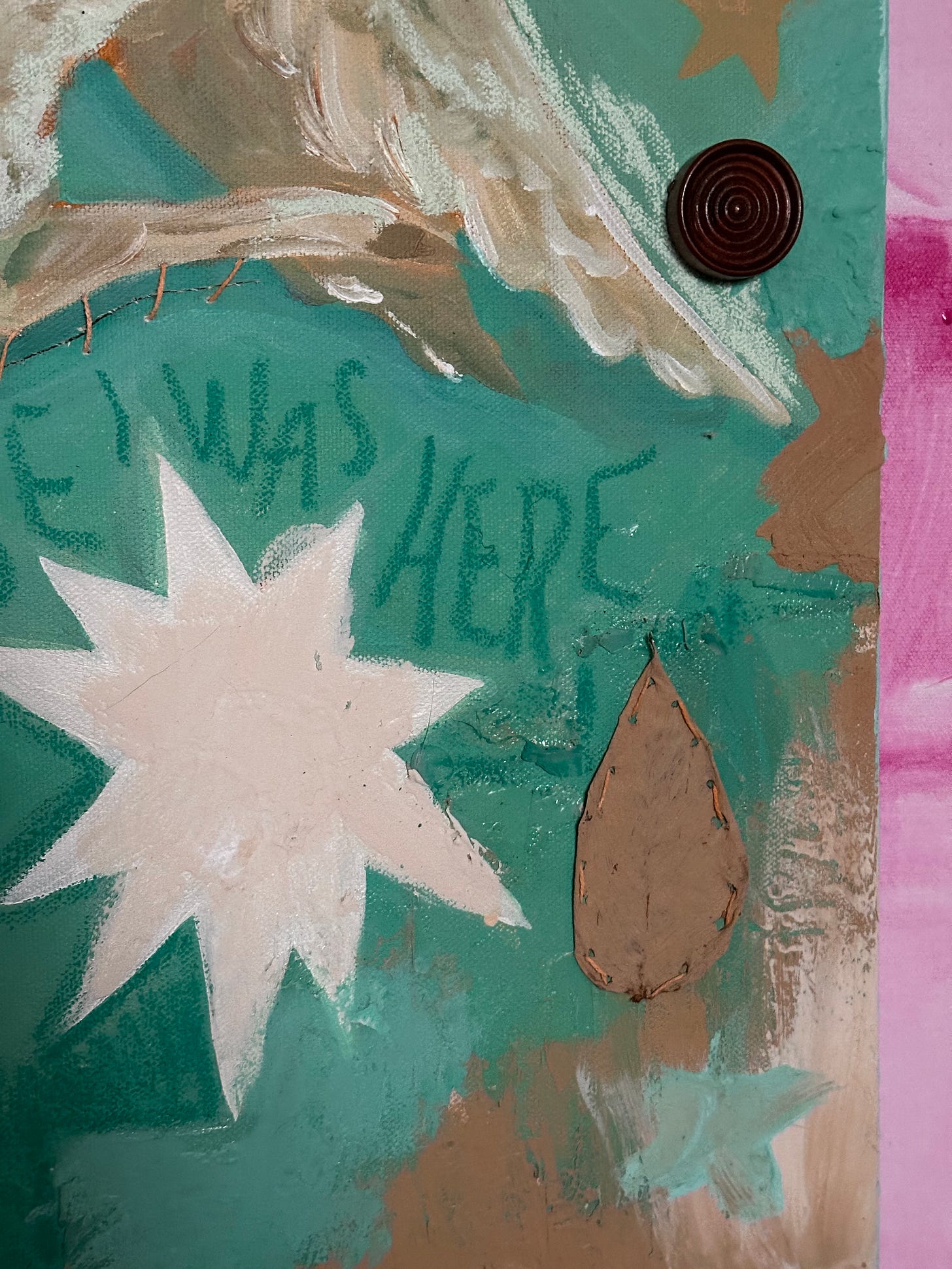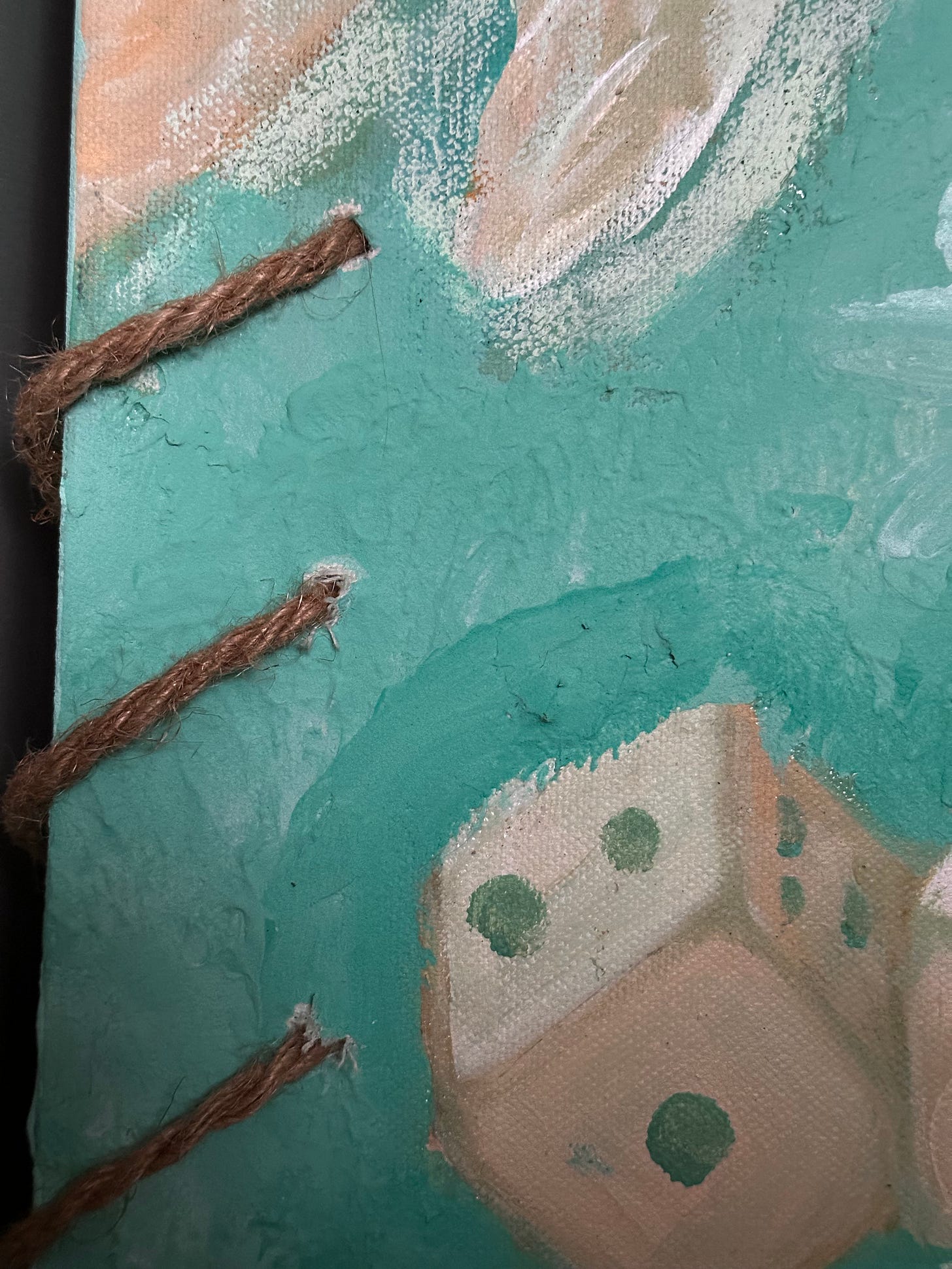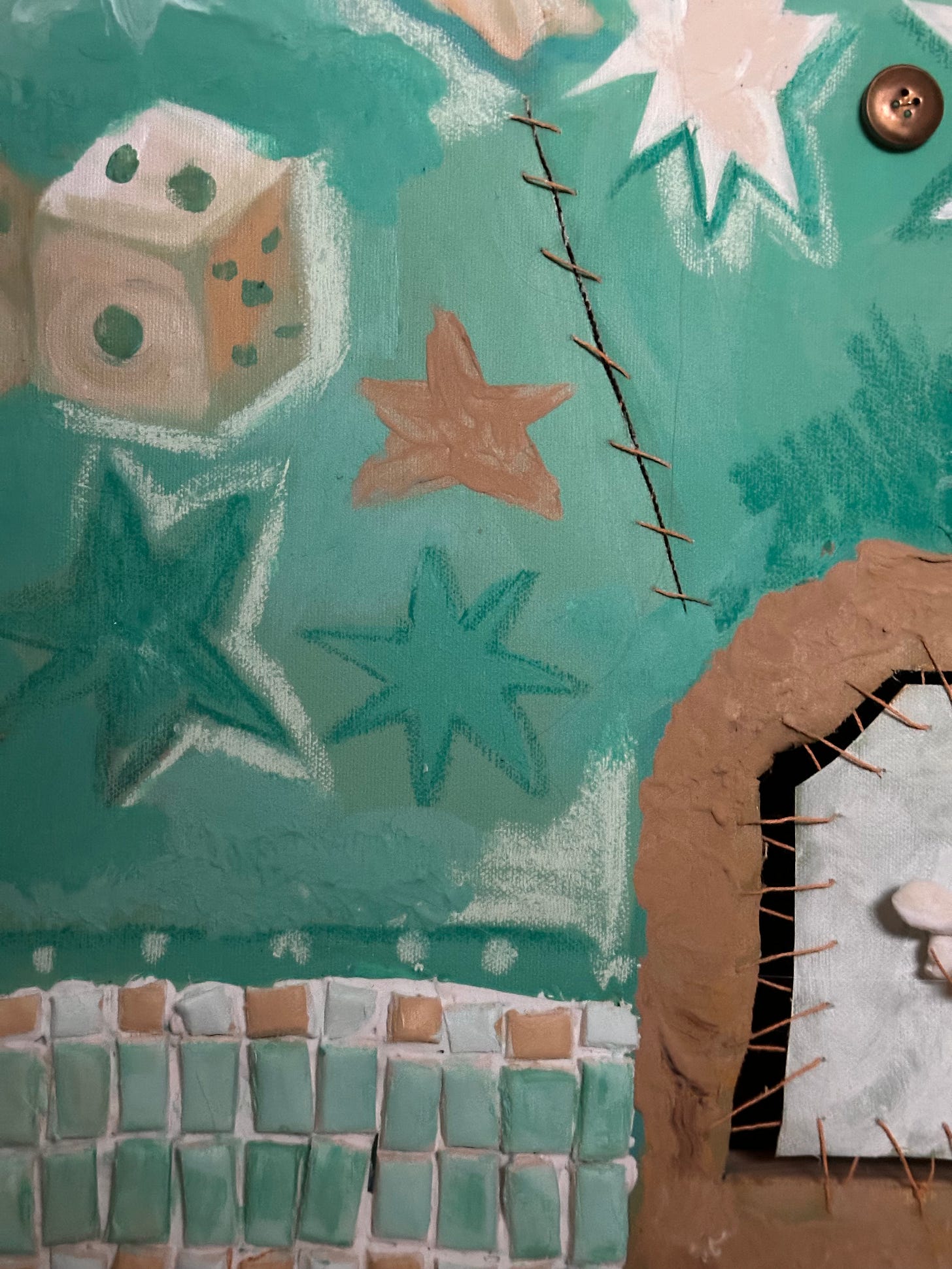make mistakes like an artist

The creative person comes to find that a creative practice really is more like a creative life. As you continue to develop your creative spirit, the edges between our impulses and a greater process of meaning-making become indistinguishable. It is as though our understanding of the world becomes rooted in the process of bringing things to life, and in the ebbs and flows of the energy necessary for this possibility to arise.
It has been endlessly helpful for me to blur the lines between these worlds and develop a practice in life that closely mirrors my creative practice. Each resembles the other; life imitates art, art imitates life. I have found no other reason for this phenomenon beyond the thought that perhaps the very nature of our lives bears some resemblance to the process of building something from nothing. Not just bearing life as humans, but our desire to curate, customize, and bring life to our lands, our homes, our crafts.
When we create, we enter a cycle awfully reminiscent of our lives, thematically, metaphorically. It’s no surprise that the way we create is a therapy for us; we are our greatest selves when we make something of our experiences. In the processes of creating and living life, we enter a series of decisions, some made by instinct and others by intent. We begin to live by those decisions, unfurling into our lives through our will.
In the act of making and acting on decisions, the reality is that we’ll make plenty of mistakes. We’ll behave in a way we don’t usually; things don’t work out. The outcome is different from what you expected it to be. We’ll go in directions we didn’t mean to go, and we’ll hit dead ends. We’ll have to make changes, pivots. Our decisions will make us become lost, and our being lost will inform our decisions. We may find shame in our choices. Regrets may brew from perceptions of time lost or circumstances changed. We may hope to bury our decisions, reducing any chance of a reminder.
Last month, I had the pleasure of visiting the Musée Matisse and encountered a vast collection of work by the great Henri Matisse. His beautiful, organic, and simplistic designs I had rarely seen in person, and never in this quantity.
When you get the opportunity to look at any visual work up close, you can start to see the story of its creation. You see brushstrokes, finger prints, layers and layers of pigment. These are all tied to a wider appreciation for the composition, each piece derived from the whole; each a decision by the maker.

What amazed me about Matisse’s work was not his bold, free-flowing linework or vibrant colours; it was his mistakes. It was how he dealt with undesirable decisions that captivated me. You see, Matisse, in many of his works housed in Nice, never removed the process of its making. Or if he did, he did not care too deeply about pretending they never happened. On many of his pieces, there are lines drawn in pencil, never erased. There are imperfect repairs made on pieces with stray lines. The process remains visible, the mistakes still take shape.

This, in some ways, is in service of accountability, whether or not we intend it to be. Our mistakes become less about their failure and more about their place in the unfolding of things. From this, the general admiration for the process can be taken, and we can recognize the contribution of our mistakes to the whole. We do not need to hide what has happened, even if it changes the outcome from what we imagined.
This dawned on me weeks after my initial amazement as I began the process of finishing a work that I was displeased with. At each step, I was frustrated, and from each, I had amendments to make. At one point, I sat for a while struggling with the glue that was holding my seemingly poor decision in place. I couldn’t get it off. I scraped and scraped only to dig my grave a little further, a little less reversible than before.

I had sought to bring myself to a time before the decisions that did not work. I hoped to start over. But when that is not in the cards, I was stuck with the reality that my mistakes would be visible on this work, no matter how hard I tried. The work, which was about legacy and evidence, was an apt piece to receive this experience. I was forced to keep the story.

As time went on, I began to draw parallels between this experience and our paths in life, where we seek to return to before a mistake is made or make reparations after it. Often, we want the composition which is our lives to be a certain way. In theory, it’d be nice to have a final image that is seemingly perfect, each decision made with good thought and met with good luck. But unfortunately, that is not the case, and our lives will require some sort of acceptance of our mistakes. We will need to find a way to allow them into the final piece.
We may try to hide our mistakes, but only in some ways will it work. Our efforts will be met with resistance; what has been done cannot be changed. So we will have to make mistakes like artists and work them into the final piece, softening them by bringing them into the context of the story. We will become less concerned with the weight of our mistakes, knowing that they will in some way join the chorus.

Our mistakes will be a part of our evidence, rippling into our lives through the snowballing of experience, knowledge and opportunity. They will not need to be hidden, just accepted as a part of being human, of being creators.
Decisions need not be enjoyed to be placed in their rightful spot in an admired lifetime. We can become accepting of the way our mistakes contribute to the story; the depth of the piece is already made. The piece has gained humanness, showing the steps it took to get to where it ends. We’ve used our craft to show us our reality, that this is all connected in some strange but beautiful way.


Leave a comment